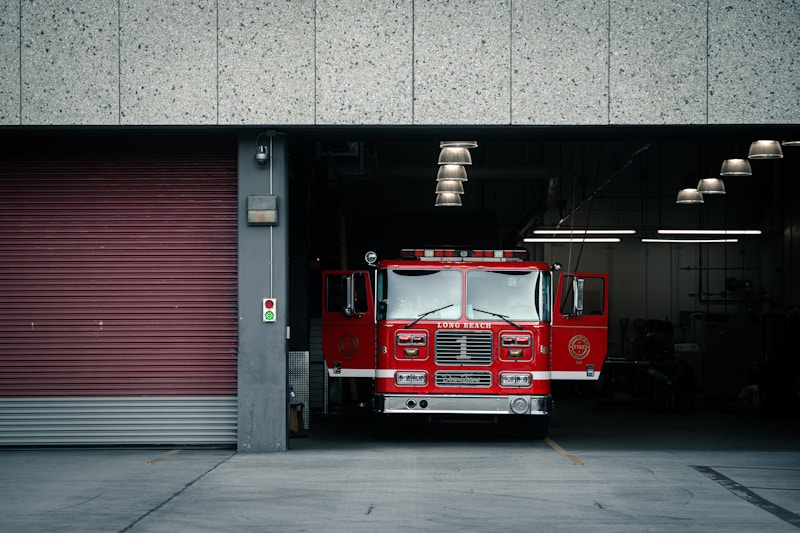Effective Strategies for Flexible Planning in Case of Emergencies
Effective Strategies for Flexible Planning in Case of Emergencies
Introduction
In today's unpredictable world, having a flexible planning strategy in case of emergencies can be a lifesaver. Whether it's a natural disaster, a public health crisis, or a sudden financial downturn, being prepared is essential for individuals and organizations alike. This article delves into the key aspects of flexible planning, providing valuable insights and tips to ensure you are ahead of the curve when emergencies strike.
What is Flexible Planning?
Flexible planning refers to the ability to adapt and modify plans based on changing circumstances and unforeseen events. This approach emphasizes the importance of preparedness, allowing for quick adjustments when situations do not unfold as expected. By incorporating flexibility into your planning, you can mitigate risks and effectively respond to emergencies.
The Importance of Flexible Planning in Emergencies
Emergencies can arise at any time, making it imperative to have a strategy that can evolve as needed. Here are several reasons why flexible planning is crucial:
- Quick Response: A flexible plan allows for immediate reactions to unforeseen events, minimizing potential damage.
- Resource Optimization: Adapting plans can lead to better utilization of available resources during crises.
- Enhanced Resilience: Organizations and individuals with flexible plans are often more resilient in facing challenges.
Key Components of a Flexible Emergency Plan
To effectively implement flexible planning, consider incorporating the following elements:
1. Risk Assessment
Conduct a thorough risk assessment to identify potential hazards and vulnerabilities. Understanding the risks enables you to create contingency plans that are tailored to your specific situation.
2. Clear Communication
Ensure that your emergency plans include clear communication protocols. This can involve establishing a communication tree or using messaging apps dedicated to emergency notifications.
3. Resource Management
Identify and manage resources effectively. This includes having an inventory of supplies and understanding how to access additional resources quickly.
| Component | Description |
| Risk Assessment | Evaluating potential threats and vulnerabilities. |
| Clear Communication | Establishing effective communication channels during emergencies. |
| Resource Management | Organizing and managing supplies and personnel. |
| Training and Drills | Preparing all involved parties through simulations and exercises. |
4. Training and Drills
Regular training and drills can keep individuals and teams prepared for emergencies. This practice can highlight areas for improvement in your plans and ensure that everyone knows their roles and responsibilities.
5. Review and Adaptation
Regularly review and update your emergency plans. Adaptation is key; what worked last year might not be effective this year due to new threats or changes within your organization.
Case Studies: Successful Flexible Planning
Examining case studies from various organizations can provide insight into effective flexible planning. For instance, during the COVID-19 pandemic, many companies shifted to remote work and implemented health protocols that allowed them to continue operations. This adaptability proved essential for maintaining business continuity.

Creating a Personal Emergency Plan
When it comes to personal emergencies, creating a flexible plan is equally important. Here are some steps you can take:
1. Develop an Emergency Kit
Put together an emergency kit that includes essential items like food, water, medical supplies, and personal documents. Ensure that the kit is regularly updated, especially if you have a changing household.
2. Establish a Family Communication Plan
Create a family communication plan detailing how you will contact each other and where to meet in case of an emergency.
3. Stay Informed
Keep updated on current events in your area and understand the types of emergencies that are most likely to occur.
Challenges to Effective Flexible Planning
While flexible planning offers many benefits, it also comes with its share of challenges:
- Resistance to Change: Some individuals may resist adaptation, preferring familiar routines.
- Resource Limitations: Not all organizations have the resources or personnel to create flexible plans.
- Lack of Training: Organizations that do not prioritize training may find themselves unprepared during a crisis.
Conclusion: Embracing the Need for Flexible Planning
In conclusion, flexible planning in case of emergencies is not just a luxury; it’s a necessity. Understanding the risks, optimizing resources, and maintaining clear communication can make a significant difference when disaster strikes. Whether you are preparing at an organizational level or for personal emergencies, the strategies discussed in this article can provide a roadmap to resilience and efficiency. Stay ahead by regularly reviewing your plans and adapting to new challenges as they arise.
By embracing a culture of flexibility and preparedness, you equip yourself and your organization to navigate the complexities of unforeseen events. Remember, the goal is not just to survive but to thrive in the face of adversity.
